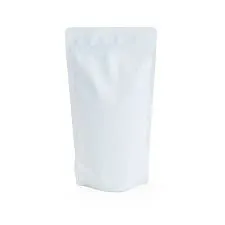Innovative Solutions for Sustainable and Eco-Friendly Edible Packaging Alternatives
The Rise of Edible Food Packaging A Sustainable Solution for the Future
In an era characterized by an increasing awareness of environmental issues, the food industry is at the forefront of innovation, particularly when it comes to sustainable practices. One of the most intriguing developments in this realm is the emergence of edible food packaging. This innovative solution not only addresses the pressing concern of plastic waste but also enhances the overall food experience for consumers.
Edible packaging can be defined as materials that are safe for consumption and can serve as a replacement for conventional packaging. These materials can be derived from natural ingredients, such as seaweed, starches, and proteins, making them a healthier alternative for both the environment and consumers. The concept of eating one’s packaging may seem novel or even unconventional, but it opens doors to numerous benefits, both ecological and practical.
One of the primary advantages of edible food packaging is its potential to drastically reduce the amount of plastic waste generated by the food industry
. According to the United Nations, approximately 300 million tons of plastic are produced each year, much of which ends up in oceans, landfills, and as litter in natural landscapes. This alarming statistic poses a significant threat to wildlife and ecosystems. By replacing traditional plastic packaging with edible alternatives, companies can contribute to the reduction of plastic pollution, promoting a healthier planet.Moreover, edible packaging could also enhance food preservation. Many edible packaging solutions incorporate natural preservatives, which can extend the shelf life of products without the need for synthetic additives. For instance, researchers are experimenting with edible films that contain antimicrobial properties, effectively preventing spoilage and foodborne illnesses while being completely safe for consumption. This not only benefits consumers by providing safer food options but also helps businesses minimize waste due to spoiled products.
edible food packaging

The versatility of edible packaging is another compelling factor. It can be tailored to suit various types of food products, including snacks, sandwiches, and even liquids, thereby expanding its applicability across different segments of the food market. For example, the company Skipping Rocks Lab has developed a product called Ooho!, which is a water capsule made from seaweed extract. This innovative packaging not only provides a portable solution for hydration but is also biodegradable, showcasing the potential for edible packaging to revolutionize the beverage industry.
Consumer acceptance of edible packaging is on the rise as well. With growing health consciousness, many individuals are more inclined to choose products that are organic, natural, and environmentally friendly. As awareness of the detrimental effects of plastic waste increases, consumers are increasingly supportive of innovative solutions that align with their values. Companies that embrace edible packaging stand to gain a competitive edge by attracting eco-conscious consumers looking for sustainable alternatives.
However, challenges remain in the widespread adoption of edible packaging. Issues such as production scalability, cost-effectiveness, and regulatory hurdles must be addressed to facilitate its integration into mainstream markets. Nevertheless, with ongoing research and a commitment from both companies and consumers to promote sustainability, edible food packaging holds tremendous promise for reshaping the future of the food industry.
In conclusion, edible food packaging represents a significant step toward sustainability, helping to combat plastic waste while providing practical benefits for food preservation and consumer health. As technology advances and acceptance grows, the potential for this innovative solution to transform our approach to packaging is both exciting and necessary. The future of food packaging lies in our ability to think beyond traditional materials and embrace eco-friendly alternatives that nourish both our bodies and our planet.













